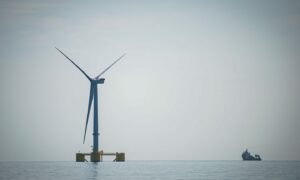As challenges go, the race to net zero is a major task. The UK has set the goal of achieving this by 2050, with a major push into renewable energy, hydrogen and carbon capture to deliver this ambitious target.
The UK highlighted its plans in Glasgow when it hosted COP26 in November 2021. The event saw 197 states involved in discussions on committing to net zero. The International Energy Agency (IEA) predicted that if the pledges can be delivered, the world would be on track for a 1.8 degree Celsius increase.
At the heart of the UK’s plan for a green industrial revolution is the intent to build on the UK’s historic strengths, and adapting industry to embrace the energy transition, paving the way for the UK to meet its carbon commitments – while also creating new opportunities to export expertise.
Shifting from a hydrocarbon-based society to a decarbonised one will not be straightforward.
The importance of security of supply was demonstrated in September 2021 when low wind forced coal power plants to be switched on and more recently by the Russian invasion of Ukraine.
The British Energy Security Strategy, published in April 2022, has further emphasised the need to focus on hydrogen and nuclear as part of the UK’s energy transition and the need to develop a long-term approach to energy infrastructure.
Although good progress has been made in reducing emissions (in 2018, UK carbon emissions stood at 57% of their 1990 levels) this has largely been achieved by offshoring of manufacturing and moving away from coal.
There is still much more to be done, particularly for the harder to decarbonise sectors of heating, transport and industry. The next steps will be more challenging.
Regional industrial decarbonisation
The next major change will come through the decarbonisation of six industrial clusters, based in areas of the UK that contribute the most industrial emissions. Industry accounts for around a quarter of all UK greenhouse gas emissions with more than two thirds coming from a small number of energy intensive industries.
Tackling industries such as steel and cement production, power generation and oil refining will offer the UK its next big step towards its target; to establish the world’s first net zero carbon industrial cluster by 2040 or at least one low carbon cluster by 2030.
The six clusters are initially focused on big industrial players, but as low carbon systems are developed, their scope will broaden beyond their original limits.
Once a hydrogen supply is established to power a steel plant, for example, production could be increased to provide zero carbon electricity for supermarkets, houses, hospitals and offices in the surrounding areas.
The South Wales Industrial Cluster (SWIC), along with the other five clusters, will provide an important steppingstone and testing ground for the UK to tackle its wider emissions problem.
Costain is a lead partner for the SWIC deployment project, and the focus is on technology agnosticism and bringing together the various strands of technology, energy systems, companies and interests to find a common way forward.
This collaborative, cluster approach supports the ultimate ambition of the SWIC project which goes beyond simply identifying how the largest emitters in the region could decarbonise their operations at lowest cost and progress technically feasible projects.
Recommended for you









